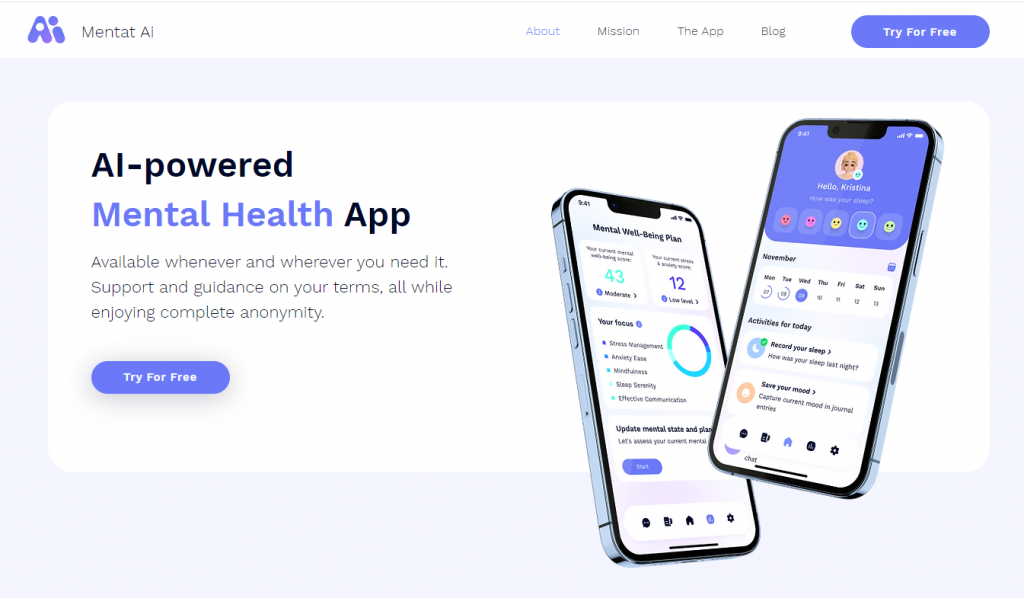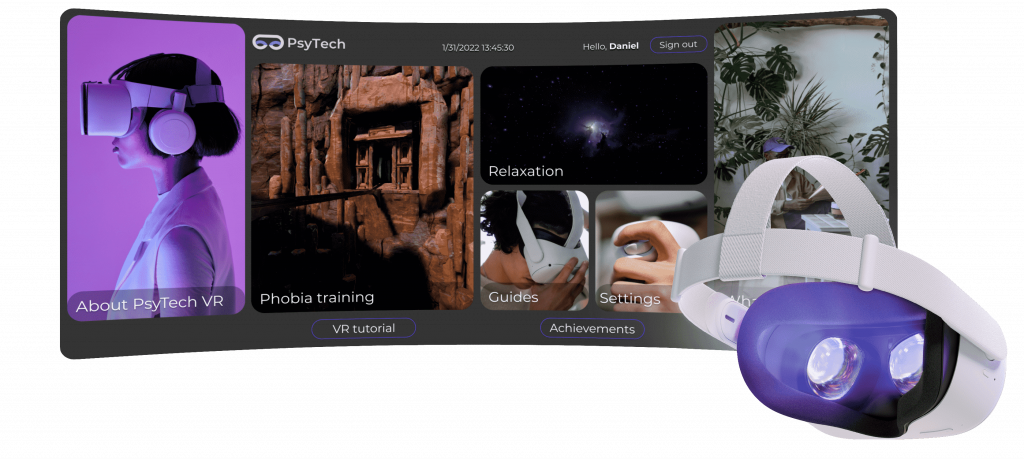According to WHO (2022), in 2019, there were approximately one billion people suffer from mental health disorders, and this phenomenon has exacerbated since COVID-19. People are in urgent need of sufficient and effective mental health support. Correspondingly, there were many existing traditional treatments, and doctors and scientists are working on integrating AI, AR and VR technologies into mental health therapy and daily support.
Improvement made with AI: timely intervention and accurate diagnosis
On average, 71% of patients with psychosis do not receive mental health treatment (WHO, 2022). So, what can AI do to help with this? In this field, AI is not only limited to unusual pattern identification now, it is advancing by innovative algorithms, potential risk assessments and designing affordable personalized therapy and treatment.
Firstly, the innovation of algorithms includes training with massive data sets, such as medical records, brain scanning and detecting dangerous signals on social media. In this way, AI learnt how to differentiate subtle signals and detect early stages of depression, anxiety and so on. Secondly, the application combined with AI can analyze the family history, social interactions and medical history to predict their behavioural tendency, future development direction of psychological conditions and potential risk points. Depending on the prediction generated by AI, doctors and psychological counsellors can provide personalized treatment plans and adjust medication and consultation methods promptly to meet an individual’s unique needs and prevent further deterioration of the patient’s psychological condition.

Graph 1 – Introduction page of Mentat Ai website (Mentat Ai, 2024)

Graph 2 – Scale of impact of Wysa (Wysa, 2024)
I will take two applications called Mentat AI and Wysa as examples, which are two AI-driven applications launched, aiming to help people with mental health concerns. Both of them provide 24/7 AI mental support, mental status self-evaluation tools, and some basic scientific techniques such as CBT and mindfulness. Up to now, Wysa has provided support to more than six million people in 95 countries and processed more than 500 million conversations.
AR and VR for better mental status
Much research has proved that AR and VR are useful for many different types of disorders based on cognitive behavioural therapy (van Loenen et al., 2022). There are two examples of how AR and VR can be adapted to therapy or mental disorders. Firstly, VR can provide patients with immersive environments, which allows them to overcome their phobias in a controlled environment. This method is particularly effective for arachnophobia and acrophobia (Bălan et al., 2020). Besides, VR can also used to do mindfulness training, and the users can reduce stress by guided meditations. Secondly, since AR can reflect images and texts into the real world by devices, it can also put therapeutic elements into the physical world, including providing real-time suggestions and socialization mechanisms to people who have social anxiety.

Graph 3 – PsyTech VR’s appearance and interface (PsyTech VR, 2024)
The products applying these technologies include PsyTech VR and XR Health. PsyTech VR is more focused on mental health, especially exposure therapy, compared to XR Health. PsyTech VR can help individuals tackle a wide range of mental problems, such as phobia, OCD, PTSD, anxiety and so on. While having the ability to design unique therapy plans, it can also be used for group treatment for up to 20 people. As for XR Health, it uses VR to help patients with both physical and mental problems, while doctors and professionals can track the development and health data of the patient based on the analysis provided by XR Health.
In conclusion, with the advancement of AI, AR, and VR in mental health applications, more stakeholders will benefit from it. In addition to the patients themselves, their families, hospitals, communities, schools, public welfare organizations, etc. can also save more time, energy and money while providing better support to patients. However, preventing data leakage and preventing the exposure of patient privacy are still issues that need attention, because once these devices and applications are put into actual use, they will be inseparable from the patient’s life. While improving the effectiveness of these applications, we should also attach great importance to the protection of user data and the maintenance of security systems.
References
Bălan, O., Moise, G., Moldoveanu, A., Leordeanu, M., & Moldoveanu, F. (2020). An investigation of various machine and deep learning techniques applied in automatic fear level detection and acrophobia virtual therapy. Sensors, 20(2), 496.
Mentat Ai. (2024). Mentat Ai. https://www.mentat-ai.com/?gad_source=1&gclid=CjwKCAjw6JS3BhBAEiwAO9waFzdmB8rxfODubmSyjEo8vrpwZl1QRZgXQMD4CqR97PhFYxjxNNta0BoC51oQAvD_BwE
PsyTech VR | Mental Health and Wellness system for Meta Quest, PICO and HTC. (2024). https://psytechvr.com/
van Loenen, I., Scholten, W., Muntingh, A., Smit, J., & Batelaan, N. (2022). The effectiveness of virtual reality exposure–based cognitive behavioral therapy for severe anxiety disorders, obsessive-compulsive disorder, and posttraumatic stress disorder: Meta-analysis. Journal of medical Internet research, 24(2), e26736.
WHO. (2022b, June 17). WHO highlights urgent need to transform mental health and mental health care. WHO. https://www.who.int/news/item/17-06-2022-who-highlights-urgent-need-to-transform-mental-health-and-mental-health-care
WYSA. (2024). Wysa – Everyday Mental Health. https://www.wysa.com/

Very interesting blog post Lijing. Last year there was some commotion in the Dutch mental healthcare about the choice of the Dutch healthcare authority to retrieve information from 800k patients in mental healthcare. The purpose was to train an algorithm to reduce the waiting times. I did not know there are mental health apps right now that try to leverage AI. I assume it allows for more natural conversations, but I also wonder how effective such apps are when looking at the long-term and the severity of the person’s issues. The use of VR and AR in mental healthcare definitely looks promising, especially for someone with anxiety.
Thank you for this post, Lijing! I agree that the possibilities for integrating these new technologies into (mental) healthcare are far-going and definitely lend themselves for many improvements, especially in the tailoring of medical approaches to individuals. However, a significant concern I have regards the underlying databases and algorithms that AI tools use to generate recommendations. In her book “Invisible Women”, Caroline Criado Perez highlights the “gender gap”, a phenomenon in which women have long been (and still are) excluded from data collected. This is especially problematic in healthcare, where differences between men and women—such as in heart attack symptoms—can be great and can have far-going consequences. When we start to increasingly rely on AI recommendations in our healthcare, ensuring that databases are more inclusive and that algorithms are regularly reviewed for gender and other demographic disparities improves the tailored care that individuals receive.